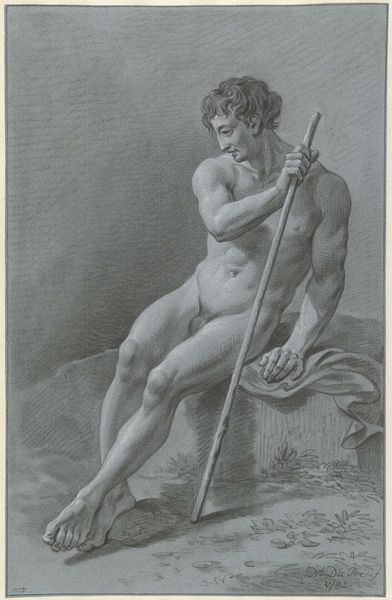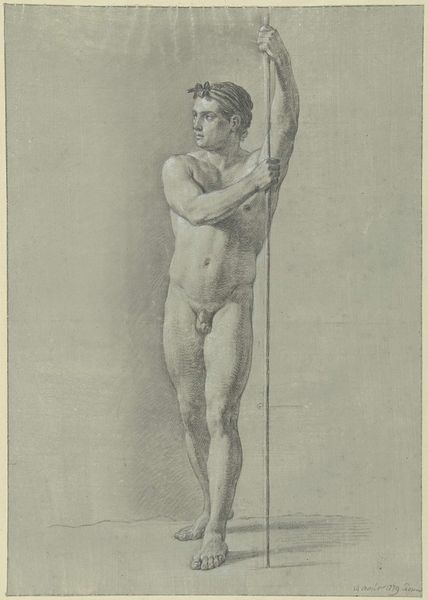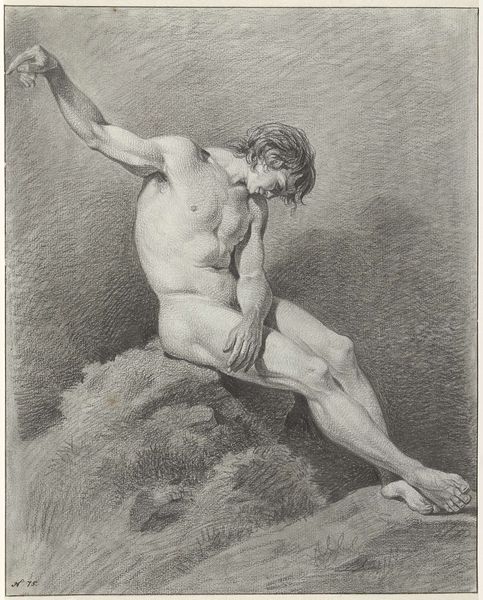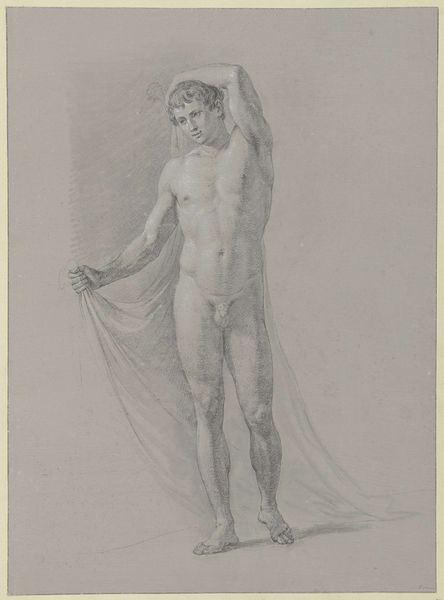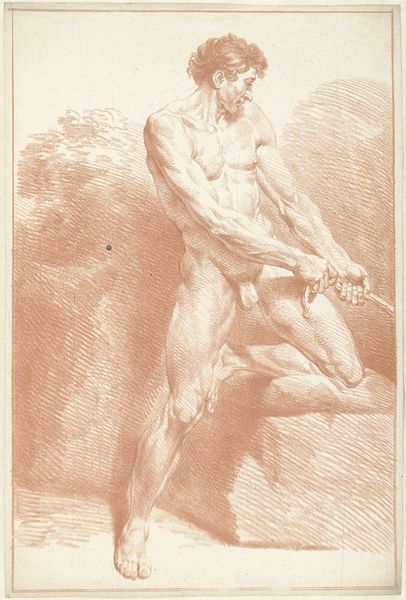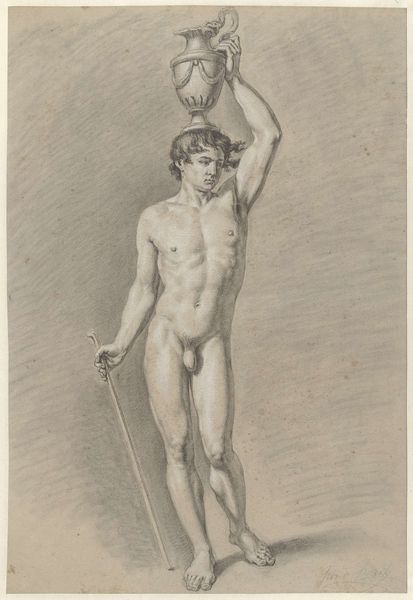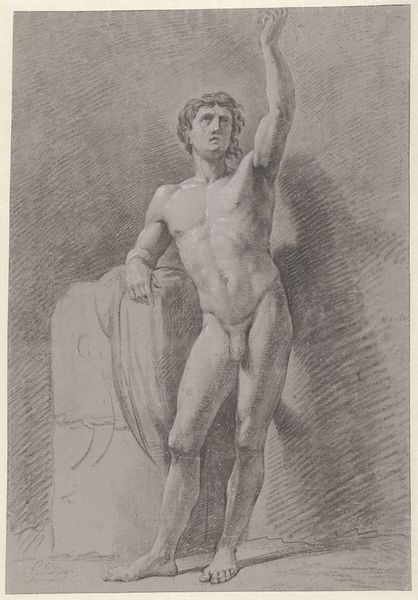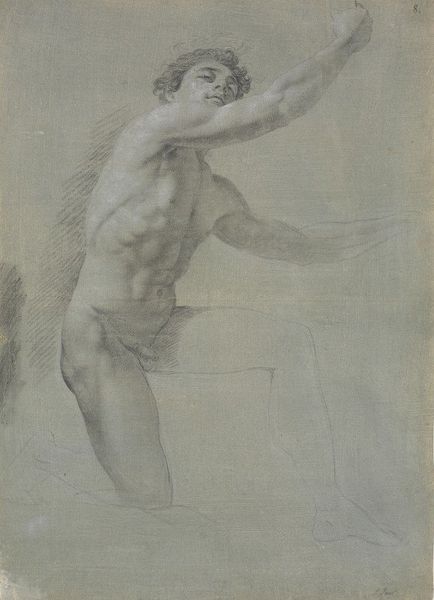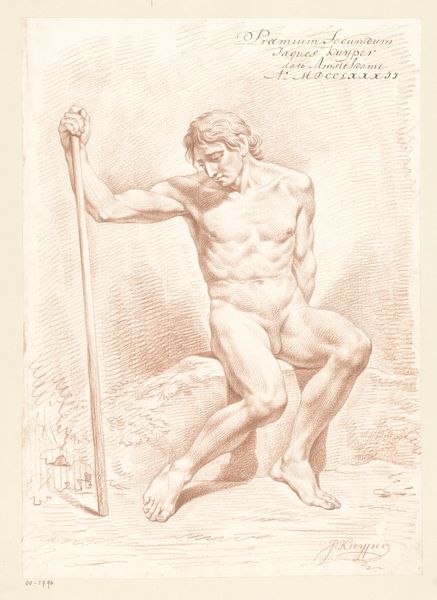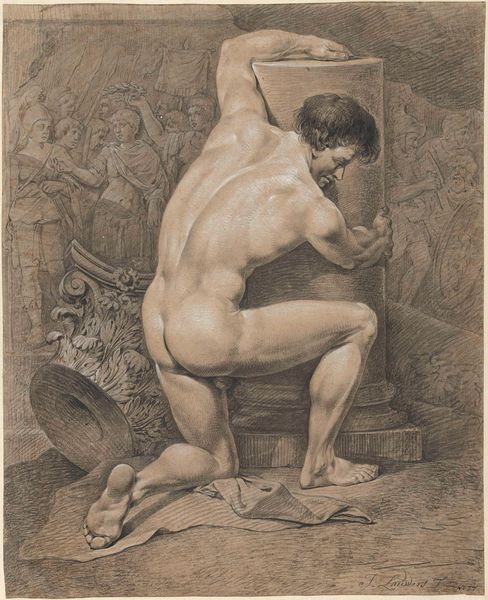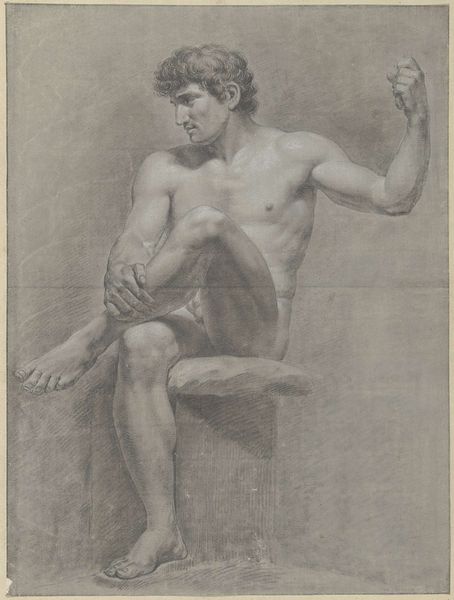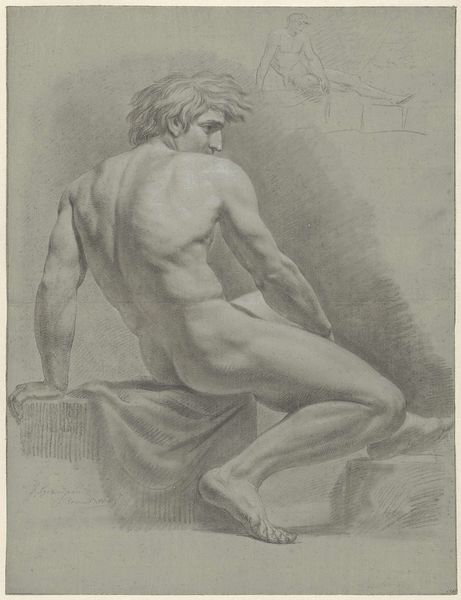
drawing, pencil, charcoal
#
portrait
#
drawing
#
neoclacissism
#
light pencil work
#
pencil sketch
#
charcoal drawing
#
charcoal art
#
portrait reference
#
pencil drawing
#
underpainting
#
pencil
#
portrait drawing
#
charcoal
#
academic-art
#
nude
#
portrait art
#
fine art portrait
Dimensions: height 528 mm, width 390 mm
Copyright: Rijks Museum: Open Domain
Editor: Here we have "Zittend mannelijk naakt met staf en opgetrokken linkerbeen," or "Seated Male Nude with Staff and Raised Left Leg," a drawing made with pencil and charcoal between 1765 and 1781 by Jean Grandjean. It's a classical nude, but what strikes me is the artist’s detailed use of shading to render the figure's musculature and the contrast with the vagueness of the background. How does this interplay contribute to the drawing's overall effect? Curator: The drawing commands attention due to its meticulously constructed form, brought forth through the precise manipulation of pencil and charcoal. The contrasts between the refined rendering of the subject and the comparative ambiguity of its surroundings are worth remarking upon. Are the tonal shifts uniform, or is there intentional disparity introduced between one element and another, specifically with the handling of the background space? Editor: It's an uneven application, quite striking actually. The figure is quite meticulously rendered. Curator: The intentional unevenness contributes to the interplay between depth and surface, grounding the figure while still implying space through subtle gradations of light. We can consider the subject, positioned as an object of aesthetic investigation and the classical ideal that informs such representations. Editor: I see what you mean. So, beyond just skill, this variance of precision guides our reading? Curator: Precisely. Consider how the semiotic weight is differently distributed between figure and ground. Editor: Thank you. I now understand the importance of how different visual elements come together, it is all connected to how we understand a piece. Curator: Indeed, by examining those connections, we glean a deeper insight into the artist's intentions and, more broadly, the intellectual landscape of the period.
Comments
No comments
Be the first to comment and join the conversation on the ultimate creative platform.
